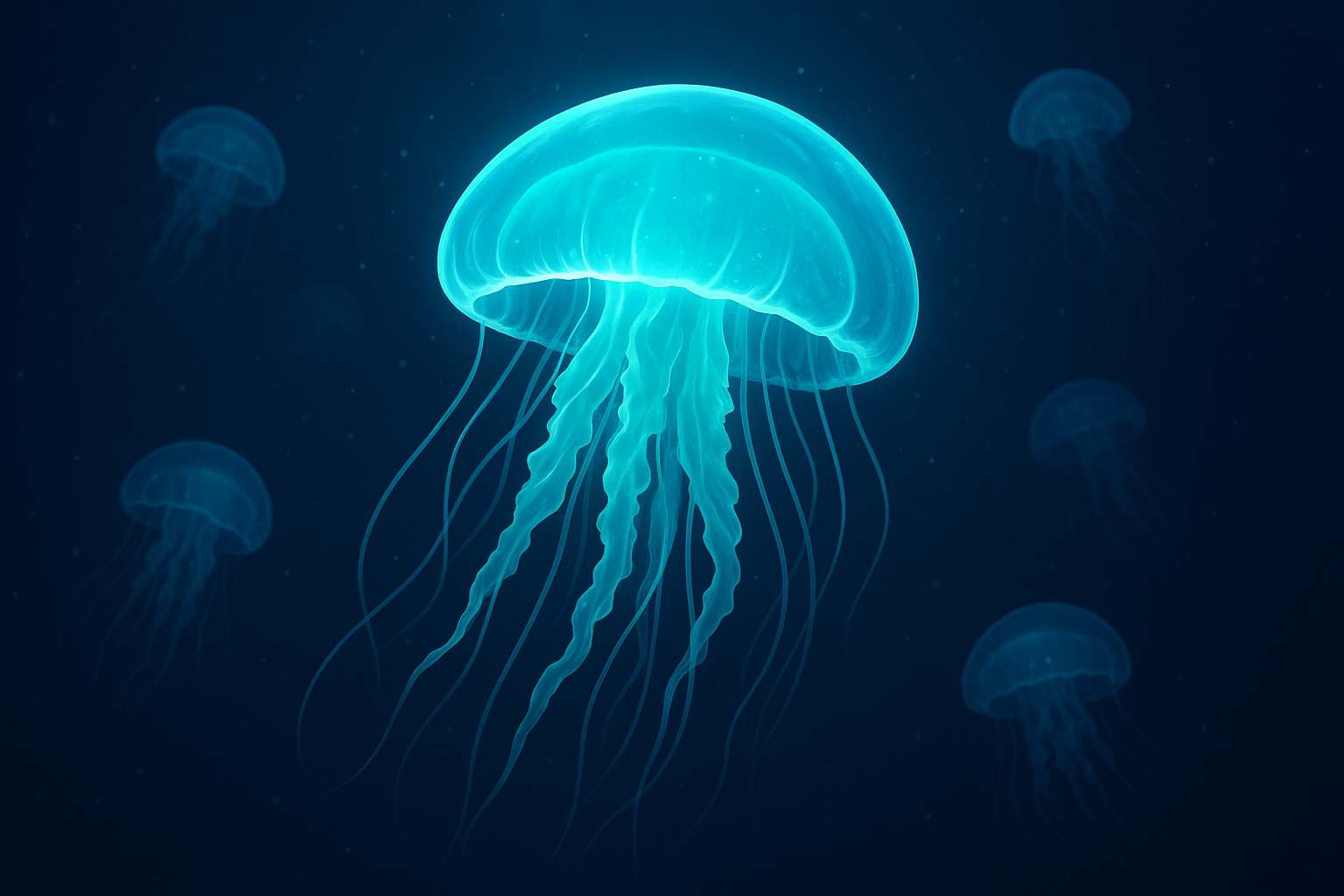
Discover fun jellyfish facts for kids! Learn how these brain-free ocean drifters glow, sting, and survive from USA to UK and Australia.
When you think of ocean creatures, you might imagine dolphins, sharks, or colorful fish. But floating quietly through the waves are some of the strangest and most mysterious creatures of all—jellyfish. They look like glowing umbrellas, drifting wherever the water takes them. But did you know that jellyfish have been around longer than dinosaurs and even trees? Let’s dive into their world and discover why they’re so amazing.
Not Really Fish!
Even though we call them jellyfish, they aren’t fish at all. Fish have bones, brains, gills, and hearts. Jellyfish have none of those! Their bodies are made up of a soft, squishy material that’s mostly water—about 95%! They are invertebrates, which means they don’t have a backbone.
So how do they survive without a brain? Jellyfish use a simple nerve net that helps them sense light, smell, and movement. It’s like having tiny sensors all over their body instead of one big brain.
Masters of Survival
Jellyfish are some of the oldest creatures on Earth. Fossils show they have been floating in our oceans for over 500 million years—way before dinosaurs appeared! That makes them expert survivors.
They drift with the ocean currents, using their tentacles to capture food like plankton, small fish, and shrimp. Their tentacles are lined with stinging cells called nematocysts, which work like tiny harpoons. When touched, they shoot out venom to trap prey. Some stings are mild, but others can be very painful or even dangerous.
Glowing Like Lanterns
Some jellyfish are like nature’s lanterns. They can glow in the dark using a trick called bioluminescence. In the deep, dark parts of the ocean, this glow can scare predators, attract food, or help jellyfish hide.
Scientists discovered a special glowing protein from jellyfish called GFP (Green Fluorescent Protein). Today, researchers use it in laboratories to study how cells work and to track diseases. So, jellyfish are not only beautiful but also helping science!
Jellyfish Around the World
Jellyfish are found in every ocean, from the warm tropical waters to the icy Arctic seas.
- Australia: Home to some of the deadliest jellyfish, like the box jellyfish and Irukandji jellyfish. Swimmers must be careful in summer months.
- USA: Along both the East and West Coasts, jellyfish sometimes appear in huge groups called blooms. They can be a nuisance for beaches and fishing, but they’re also a sign of changing oceans.
- UK: In summer, moon jellyfish often wash up on British shores. They look magical with their see-through bodies and four purple rings inside.
Booming Blooms
Have you ever heard of a jellyfish bloom? That’s when thousands of jellyfish gather in one place. Blooms are becoming more common because of warmer oceans and fewer predators like sea turtles. While it’s an amazing sight, it can also cause problems—clogging fishing nets, stinging swimmers, and even blocking power plant water systems!
Fun Jellyfish Facts
- A group of jellyfish is called a smack.
- Some jellyfish are smaller than your pinky nail, while others, like the lion’s mane jellyfish, have tentacles longer than a blue whale.
- Jellyfish don’t swim very well—they mostly drift with the currents.
- One jellyfish, called the immortal jellyfish, can actually turn back into its younger form, almost like pressing a life reset button!
Why Jellyfish Matter
Even though jellyfish might seem scary or strange, they play an important role in the ocean. They provide food for turtles, fish, and even some seabirds. Their glowing proteins help scientists make new discoveries. And they remind us of how amazing and mysterious life in the ocean really is.
The Takeaway
Jellyfish may not have brains, bones, or blood, but they are survivors, glowing wonders, and a key part of our oceans. Next time you see a jellyfish at the beach or in an aquarium, take a moment to admire these mysterious drifters that have been around for hundreds of millions of years!






